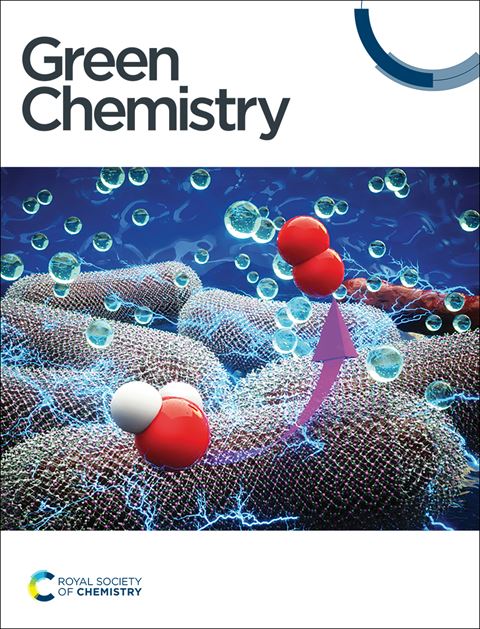Design of halogen-free hyper-crosslinked porous ionic polymers for efficient CO2 capture and conversion†
IF 9.3
1区 化学
Q1 CHEMISTRY, MULTIDISCIPLINARY
引用次数: 0
Abstract
Hyper-crosslinked porous ionic polymers (HCPIPs) are important materials for CO2 capture and catalytic conversion. In this work, we used ion exchange to combine the cross-linking-active tetraphenylborate anion (BPh4−) with a guanidine-based (Gua) ionic liquid (IL), forming a halogen-free IL ([Gua][BPh4]). Using different proportions of formaldehyde dimethyl acetal (FDA), we successfully constructed a series of halogen-free guanidine-functionalized HCPIPs (Gua-HCPIP-x) and achieved efficient CO2 capture and conversion. Specifically, Gua-HCPIP-4, which had rich porosity and a high specific surface area, achieved a CO2 adsorption capacity of up to 3.2 mmol g−1. Gua-HCPIP-x, with guanidine and BPh4− groups, exhibited higher efficiency and selectivity in the catalytic N-formylation reaction of CO2. Under mild conditions (3 bar, 80 °C), Gua-HCPIP-4 achieved a 94% yield in the CO2N-formylation reaction and maintained catalytic activity after 5 cycles. This study provides new insights into enhancing the catalytic activity of the CO2N-formylation reaction and offers practical guidance for synthesizing halogen-free HCPIPs.

求助全文
约1分钟内获得全文
求助全文
来源期刊

Green Chemistry
化学-化学综合
CiteScore
16.10
自引率
7.10%
发文量
677
审稿时长
1.4 months
期刊介绍:
Green Chemistry is a journal that provides a unique forum for the publication of innovative research on the development of alternative green and sustainable technologies. The scope of Green Chemistry is based on the definition proposed by Anastas and Warner (Green Chemistry: Theory and Practice, P T Anastas and J C Warner, Oxford University Press, Oxford, 1998), which defines green chemistry as the utilisation of a set of principles that reduces or eliminates the use or generation of hazardous substances in the design, manufacture and application of chemical products. Green Chemistry aims to reduce the environmental impact of the chemical enterprise by developing a technology base that is inherently non-toxic to living things and the environment. The journal welcomes submissions on all aspects of research relating to this endeavor and publishes original and significant cutting-edge research that is likely to be of wide general appeal. For a work to be published, it must present a significant advance in green chemistry, including a comparison with existing methods and a demonstration of advantages over those methods.
 求助内容:
求助内容: 应助结果提醒方式:
应助结果提醒方式:


